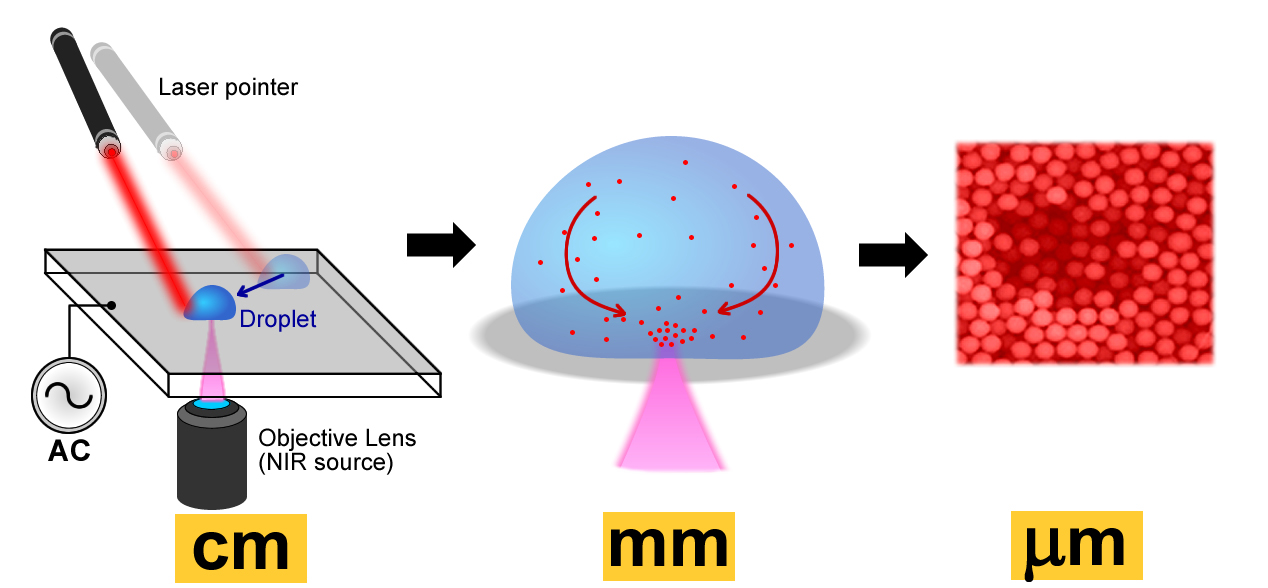Laser, electric fields combined for new ‘lab-on-chip’ technologies
July 6, 2011

"Hybrid optoelectric manipulation in microfluidics" technology combines a laser and electric fields to manipulate fluids and tiny particles such as bacteria, viruses, and DNA (credit: Stuart J. Williams, University of Louisville)
Researchers from Purdue University and colleagues are developing new technologies that combine a laser and electric fields to manipulate fluids and tiny particles such as bacteria, viruses, and DNA molecules for a wide range of potential applications, including medical diagnostics, testing food and water, crime-scene forensics, and pharmaceutical manufacturing..
This “hybrid optoelectric manipulation in microfluidics” technology could allow for innovative sensors and analytical devices for “lab-on-a-chip” applications, or miniature instruments that perform measurements normally requiring large laboratory equipment, the researchers said.
The technology works by first using a red laser to position a droplet on a platform specially fabricated at Purdue. Next, a highly focused infrared laser is used to heat the droplets, and then electric fields cause the heated liquid to circulate in a “microfluidic vortex.” This vortex is used to isolate specific types of particles in the circulating liquid, like a micro centrifuge. Particle concentrations replicate the size, location and shape of the infrared laser pattern.
The technology can also be used in nanomanufacturing because it shows promise for the assembly of suspended particles (colloids), the researchers said.
Ref.: Steven T. Wereley, et al., Hybrid opto-electric manipulation in microfluidics—opportunities and challenges, Lab on a Chip, 2011; 11 (13): 2135 [DOI: 10.1039/C1LC20208A]